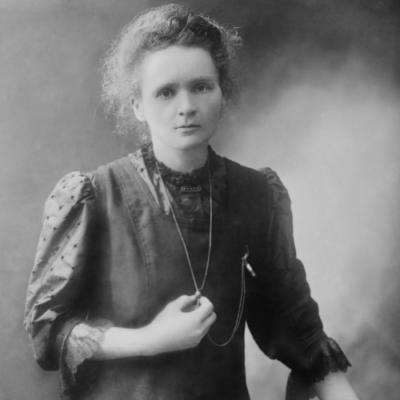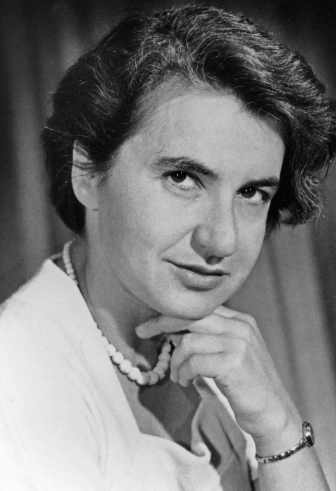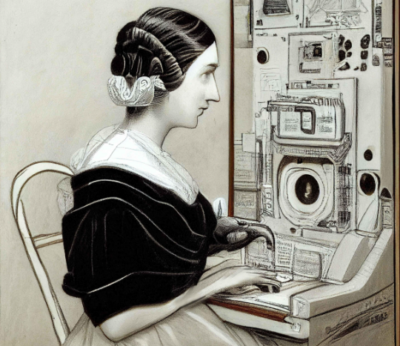Celebrating Women in STEM fields
According to the National Center for Science and Engineering Statistics (NCSES), in 2021, only 27% of bachelor’s degrees awarded in STEM fields went to women [https://ncses.nsf.gov/wmpd]. This means that men are awarded over three times the number of STEM bachelor’s degrees awarded to women.
Celebrating women in STEM acknowledges their invaluable contributions and also inspires the next generation of girls to pursue careers in these fields. It is crucial that we break stereotypes and encourage young girls to explore their passion for science and technology. When we celebrate women in STEM fields, we not only recognize their contributions but also empower the next generation of girls to pursue careers in these fields.
Overview Of The Historical Challenges Faced By Women In Science And Technology
Throughout history, women have faced numerous challenges in the fields of science and technology. One of the most significant issues is the gender disparity that exists in these fields. Women have consistently been underrepresented in STEM fields, which has limited their opportunities for growth and advancement.
Another challenge that women have faced is the lack of gender diversity in leadership roles. Women have often been excluded from positions of power within scientific and technological organizations and institutions. This lack of representation has prevented them from having a voice in decision-making processes and has perpetuated the gender imbalance in these fields.
Additionally, women have also struggled with disparities in pay. Despite making significant contributions to the scientific and technological fields, women have historically been paid less than their male counterparts. This pay gap not only affects their financial security but also contributes to the overall gender wage gap and gender inequality.
The impact of these challenges on gender equality and sustainable development is significant. Gender disparities in science and technology limit the pool of talent and perspectives in these fields, hindering innovation and progress. By excluding women from these fields and denying them equal opportunities for advancement, society is denying itself the potential contributions and expertise of half its population. To achieve sustainable development, it is crucial to address these historical challenges and create a more inclusive and equitable environment for women in science and technology.
Key Milestones In The Fight For Gender Equality In STEM Industries
The fight for gender equality in STEM industries has been marked by several key milestones. One significant milestone is the recognition of the underrepresentation of women in leadership roles within these industries. Historically, women have been confined to lower-level positions, with limited opportunities for advancement in their careers.
Another milestone is the awareness of lower publication rates and authorship credit for women compared to their male counterparts. Research studies have shown that women’s research papers often receive less recognition and are cited less frequently. This disparity not only affects individual women’s careers but also hinders women’s overall progress in STEM fields.
The share of women and underrepresented minorities in the STEM workforce grew between 2011 and 2021. Compared with women, men make up the greater share of the STEM workforce. In 2021, about two-thirds (65%) of those employed in STEM occupations were men and about one-third (35%) were women. This statistic reflects the systemic barriers and biases that women face throughout their educational and professional journeys in STEM industries. These barriers include cultural stereotypes, lack of role models, gender bias in hiring and promotion practices, and work-life balance challenges.
These issues have prompted initiatives and programs aimed at achieving gender equality in STEM industries. Efforts like providing mentorship opportunities, promoting inclusive policies, and addressing unconscious biases have begun to make positive changes. However, it is clear that much work still needs to be done to ensure equal representation and opportunities for women in STEM fields.
Close the confidence gap with Let's Go Learn!
Women Pioneers In Science
Women pioneers in science have overcome countless obstacles to make groundbreaking discoveries and contribute significantly to their fields. Throughout history, they have challenged the notion that science is exclusively a man’s domain with their perseverance and intellect. Despite facing biases, discrimination, and limited opportunities, these remarkable women have made lasting impacts on fields such as mathematics, physics, chemistry, biology, and medicine. By delving into their personal stories and exploring their extraordinary achievements, we can gain a deeper appreciation of their remarkable contributions and encourage a greater sense of inclusivity and recognition for women in the world of science.

Marie Curie
Marie Curie is widely regarded as one of the greatest pioneers in science. Not only was she the first woman to win a Nobel Prize, but she also made exceptional contributions to the field of radioactivity.
Curie’s work with her husband Pierre led to the discovery of two new elements: polonium and radium. This groundbreaking research expanded our understanding of the atomic world and shed light on the complex phenomenon of radioactivity. Her discoveries revolutionized the fields of chemistry and physics. In recognition of her remarkable achievements, Curie received a second Nobel Prize, this time in chemistry, becoming the first person–let alone a woman–to win Nobel Prizes in two different scientific fields. This astounding feat solidified her status as a true scientific luminary. Curie’s impact extended far beyond her research pursuits. She also founded the Curie Institutes in Paris and Warsaw, institutions dedicated to furthering scientific research and promoting education in the fields of physics, chemistry, and medicine. These institutes continue to inspire and educate future generations of scientists to this day.
Marie Curie’s work as a pioneering scientist and her groundbreaking discoveries in the field of radioactivity have left an indelible mark on the scientific community. Her immense contributions, coupled with her relentless pursuit of knowledge, have forever changed our understanding of the world around us.

Rosalind Franklin
Rosalind Franklin, a British chemist and crystallographer, has made invaluable contributions to the understanding of DNA and viruses. Her groundbreaking research on X-ray diffraction played a pivotal role in revealing the double helix structure of DNA.
Franklin’s X-ray diffraction studies were conducted in the early 1950s at King’s College London. Through this technique, she obtained highly detailed and clear images of DNA fibers, revealing their helical structure. Her meticulous analysis of the X-ray images provided crucial evidence that DNA exists in a double helix form, with the strands running in opposite directions.
Unfortunately, Franklin’s work on DNA was overshadowed by James Watson and Francis Crick’s discovery of the double helix structure. Watson and Crick famously used Franklin’s unpublished X-ray images and data without her knowledge or permission. They acknowledged her contribution in a lesser capacity in their 1953 paper published in Nature.
Beyond DNA, Franklin’s crystallographic studies extended to virus structures as well. She successfully captured X-ray diffraction patterns of tobacco mosaic and polio viruses, unraveling their symmetrical and linear arrangement of protein subunits.
Rosalind Franklin’s meticulous X-ray diffraction studies provided a strong foundation for our understanding of the structure of DNA and viruses. Her work laid the groundwork for the development of the field of molecular biology and remains a testament to her brilliance and dedication as a scientist.

Ada Lovelace
Ada Lovelace, often regarded as the world’s first computer programmer, made remarkable contributions to the field of computing. Born in 1815, Ada Lovelace demonstrated exceptional talent in mathematics from a young age. Her collaboration with the mathematician Charles Babbage on his groundbreaking invention, the Analytical Engine, shaped her legacy.
Lovelace’s notable achievement lies in her development of algorithms for the Analytical Engine. While Babbage designed the hardware, it was Lovelace who realized the potential of this machine as more than just a calculator. She understood that the Analytical Engine could handle complex tasks beyond mere number crunching, envisioning the machine’s use for music composition, art, and even scientific exploration.
In her extensive notes on Babbage’s work, published in 1843, Lovelace presented a series of detailed instructions that can be considered the first computer program. These instructions, or algorithms, were designed to manipulate symbols and generate outputs based on inputs. Lovelace demonstrated an understanding of the versatile nature of the Analytical Engine, recognizing its potential to process any information expressed in mathematical terms.
Lovelace’s contributions to computing and her role as the first computer programmer laid the foundation for future developments in the field. Her visionary insights transformed the perception of what a machine could accomplish, paving the way for the modern digital era. Today, Lovelace’s genius is celebrated as we acknowledge her crucial role in the history of computing.
Challenges Faced By Women In STEM Careers
Women in STEM careers face numerous challenges that hinder their progress. One major challenge is the limited opportunity available for women to contribute and advance in these fields. STEM industries have historically been dominated by men, resulting in fewer job prospects for women. This underrepresentation leads to a lack of diverse perspectives and ideas, stifling innovation within these fields.
Furthermore, a significant challenge faced by women in STEM careers is the industry’s failure to recognize their groundbreaking work. Despite making significant contributions to their fields, women often do not receive the same level of acknowledgment and validation as their male counterparts. This lack of recognition not only undermines women’s achievements but also perpetuates gender biases and stereotypes in the field.
Societal stereotypes also pose a challenge for women in STEM careers. Widespread misconceptions and biases still persist, often leading to the underestimation of their abilities and potential. These stereotypes suggest that certain fields require innate talent or traits that women are believed to lack, thereby discouraging their participation and advancement in STEM careers.
Overall, women in STEM face numerous barriers, including limited opportunities, lack of recognition for their work, and societal stereotypes. Addressing these challenges requires concerted efforts from educational institutions, industry leaders, and society as a whole to promote gender equality and create a more inclusive environment where women can thrive and contribute fully in STEM careers.


Leave A Comment